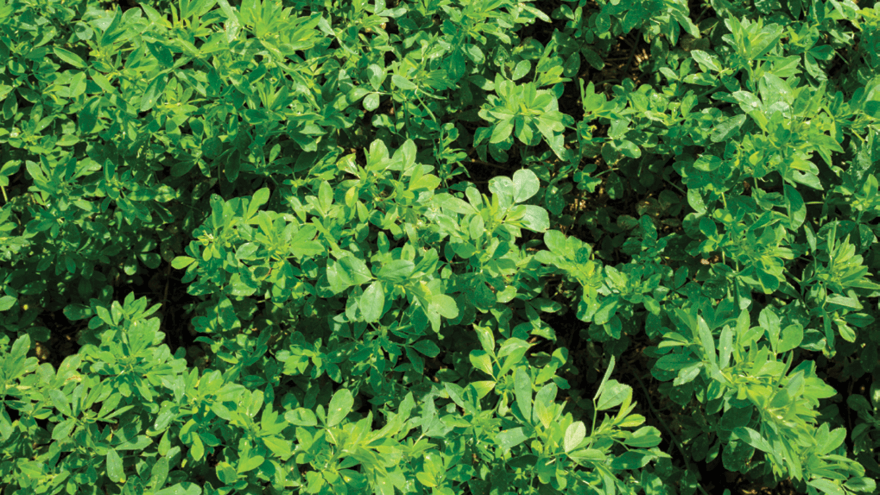
Poorly performing legumes: A nitrogen or molybdenum deficiency?
Have you ever walked into a paddock of lucerne or clover and observed underperforming, stunted plants that are yellow in colour instead of green?
If yellow in colour, you may believe it is a typical sign of a nitrogen (N) deficiency, but it could also be a molybdenum (Mo) deficiency.
The importance of Mo should not be gauged by the quantity plants require for healthy growth. For example, if a pasture producing 10 tonnes of dry matter per hectare per year uptakes approximately 400 kg of N, the same pasture would uptake only 3 g of Mo. While N and Mo may be the essential elements taken up in the largest and smallest amounts respectively, these two nutrients are intrinsically linked.
A minute reduction in Mo availability critically affects the way plants use N to grow.
Mo plays an important role in two processes in which plants use N to grow:
- All plants require Mo to turn the nitrate absorbed by the plant into amino acids and proteins.
- Legumes, which fix N from the atmosphere, use Mo to complete the process of N fixation by the nodule on the plant roots. The Mo requirement for this process is much greater than for the making of amino acids and proteins. Therefore, a Mo deficiency is more likely to be seen in a legume than a non-legume, and if it is deficient in a soil, then clover and lucerne are more likely to fail or have poor growth.
Mo deficiency in New Zealand soils was discovered nearly seventy years ago. These soils tend to be sedimentary soils, especially those with a low pH. However, other soil types (ash, pumice and organic) can also be deficient in Mo.
Even though Mo is critical to healthy plant growth, its importance can be easily forgotten. Farmers can be cautious about its use due to the risk of high Mo levels in herbage inducing copper deficiency in animals. This problem was due to over application of Mo before its use had been fully understood. There is no reason not to apply Mo so long as application rates are based on correct testing regimes and industry recommended guidelines.
A visual examination of a crop may lead to a suspected Mo deficiency. However, it must be confirmed using a legume only herbage test, as there is no reliable soil test for Mo.
When a Mo deficiency is confirmed, it can be easily rectified using solid or foliar fertilisers. Soils with low pH can also hold onto Mo too tightly and make it unavailable to plants (even if there is optimal levels of Mo in the soil). To help rectify this, liming soils to keep the pH at the optimum of 5.8 to 6.0 makes Mo more available to growing plants.
If you have clover or lucerne not growing optimally on-farm, and you’re concerned you may have a molybdenum deficiency, contact your local PGG Wrightson Technical Field Representative to take a legume only herbage test.



